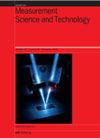Precise orbit determination of integrated BDS-3 and LEO satellites with ambiguity fixing under regional ground stations
IF 2.7
3区 工程技术
Q1 ENGINEERING, MULTIDISCIPLINARY
引用次数: 0
Abstract
The ambiguity resolution (AR) significantly enhances the accuracy of precise orbit determination (POD). There have been numerous studies of different forms of POD: double-difference (DD), single-difference (SD), and un-differenced (UD) AR methods for global navigation satellite systems (GNSS) or low earth orbit (LEO). However, challenges persist in the integrated POD (IPOD) of the GNSS and LEO at regional ground stations. These challenges include the frequent selection of dual receiver-satellite pairs in DD methods, and time-varying hardware biases in LEO receivers for UD methods. In addition, the SD AR method has not been explored in IPOD, resulting in unfixed ambiguities. In this study, we investigated the feasibility and performance enhancement of AR in the BeiDou Navigation Satellite System (BDS) and LEO IPOD under regional ground stations using simulated ground and onboard observations. First, we introduce AR models applicable to BDS and LEO IPOD and analyze the applicability of different AR models for IPOD under regional ground stations. We designed a study to utilize SD ambiguity, which eliminates the time-varying hardware bias of the LEO receiver end, to estimate the uncalibrated phase delay (UPD) of the satellite end. Furthermore, we designed the BDS-3 and LEO constellations with 24 regional ground stations in China and simulated seven days of observations. Subsequently, the narrow-lane (NL) UPD quality and AR performance were analyzed, and a solution with satisfactory stability and residual distribution was obtained, enabling the implementation of SD AR. The daily fixed rate for wide-lane ambiguities exceeded 99%, while for NL ambiguities it surpasses 86%. After fixing ambiguities, the BDS-3 orbit’s along-track and cross-track components significantly improved. Simultaneously, LEO orbit solutions improved by over 20% in all three directions. Overall, the UPD estimation model using SD ambiguities yielded satisfactory UPD results, enabling AR and significantly enhancing the orbit accuracy of GNSS and LEO.利用区域地面站下的模糊固定技术精确确定 BDS-3 和低地轨道卫星的综合轨道
模糊分辨率(AR)大大提高了精确轨道测定(POD)的精度。对不同形式的 POD 进行了大量研究:针对全球导航卫星系统(GNSS)或低地球轨道(LEO)的双差分(DD)、单差分(SD)和非差分(UD)AR 方法。然而,区域地面站的全球导航卫星系统和低地轨道综合 POD(IPOD)仍面临挑战。这些挑战包括 DD 方法中频繁选择双接收器-卫星对,以及 UD 方法中低地球轨道接收器的时变硬件偏差。此外,SD AR 方法尚未在 IPOD 中进行探索,导致模糊性无法解决。在本研究中,我们利用模拟地面观测和星载观测,研究了北斗导航卫星系统(BDS)和低地轨道 IPOD 在区域地面站条件下使用自增益方法的可行性和性能提升。首先,我们介绍了适用于 BDS 和 LEO IPOD 的 AR 模型,并分析了不同 AR 模型对区域地面站下 IPOD 的适用性。我们设计了一项研究,利用消除低地轨道接收端时变硬件偏差的自毁模糊性来估计卫星端的未校准相位延迟(UPD)。此外,我们设计了 BDS-3 和 LEO 星座,在中国建立了 24 个区域地面站,并模拟了七天的观测。随后,分析了窄线(NL)UPD质量和AR性能,得到了稳定性和残差分布令人满意的解决方案,从而实现了SD AR。宽车道含混点的每日固定率超过 99%,而窄车道含混点的每日固定率超过 86%。在解决了模糊问题之后,BDS-3 轨道的沿轨和跨轨分量得到了显著改善。同时,低地轨道解决方案在所有三个方向上都提高了 20% 以上。总之,使用自毁模糊度的 UPD 估计模型取得了令人满意的 UPD 结果,实现了 AR 并大大提高了 GNSS 和 LEO 的轨道精度。
本文章由计算机程序翻译,如有差异,请以英文原文为准。
求助全文
约1分钟内获得全文
求助全文
来源期刊

Measurement Science and Technology
工程技术-工程:综合
CiteScore
4.30
自引率
16.70%
发文量
656
审稿时长
4.9 months
期刊介绍:
Measurement Science and Technology publishes articles on new measurement techniques and associated instrumentation. Papers that describe experiments must represent an advance in measurement science or measurement technique rather than the application of established experimental technique. Bearing in mind the multidisciplinary nature of the journal, authors must provide an introduction to their work that makes clear the novelty, significance, broader relevance of their work in a measurement context and relevance to the readership of Measurement Science and Technology. All submitted articles should contain consideration of the uncertainty, precision and/or accuracy of the measurements presented.
Subject coverage includes the theory, practice and application of measurement in physics, chemistry, engineering and the environmental and life sciences from inception to commercial exploitation. Publications in the journal should emphasize the novelty of reported methods, characterize them and demonstrate their performance using examples or applications.
 求助内容:
求助内容: 应助结果提醒方式:
应助结果提醒方式:


